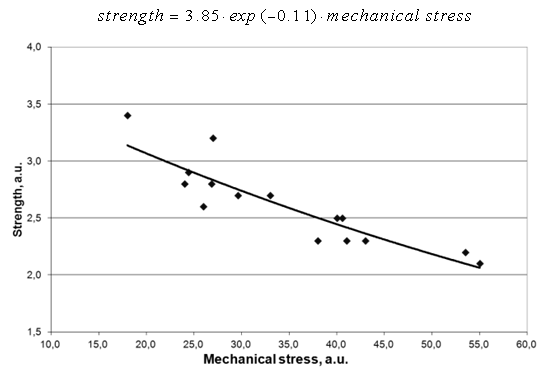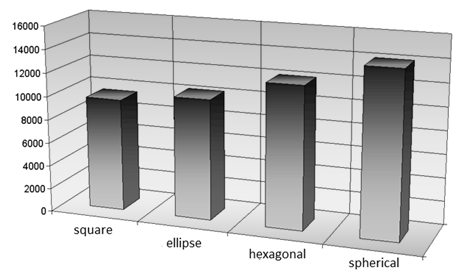-
Paper Information
- Paper Submission
-
Journal Information
- About This Journal
- Editorial Board
- Current Issue
- Archive
- Author Guidelines
- Contact Us
International Journal of Composite Materials
p-ISSN: 2166-479X e-ISSN: 2166-4919
2015; 5(4): 79-80
doi:10.5923/j.cmaterials.20150504.02
Influence of the Structure of a Material Solid Phase on the Properties of Cellular Concrete
V. Martynov1, E. Martynov1, I. Krylov1, A. Herega2
1Odessa State Academy of Building and Architecture, Odessa, Ukraine
2Odessa National Academy of Food Technologies, Odessa, Ukraine
Correspondence to: A. Herega, Odessa National Academy of Food Technologies, Odessa, Ukraine.
| Email: |  |
Copyright © 2015 Scientific & Academic Publishing. All Rights Reserved.
The inner boundaries of the solid phase of cellular concrete are considered as an independent structural element. The dependence of the strength of cellular concrete on the square the inner boundaries were shown.
Keywords: Cellular concrete, Inner boundaries, Strength
Cite this paper: V. Martynov, E. Martynov, I. Krylov, A. Herega, Influence of the Structure of a Material Solid Phase on the Properties of Cellular Concrete, International Journal of Composite Materials, Vol. 5 No. 4, 2015, pp. 79-80. doi: 10.5923/j.cmaterials.20150504.02.
Article Outline
1. Introduction
- Cellular concrete properties are traditionally associated with their average density. Therefore, e.g. if we increase concrete density, the strength will increase as well. However, even in concretes of equal densities properties vary quite significantly. Cellular concrete experts attribute the dependency of such nature to the nature of material porosity and the strength of the matrix material. However, the structural pattern is the primary cause of variability in properties of composite construction materials, including cellular concretes.
2. Brief Overview of the Results of Research
- It is well known, the properties of the material are determined by its structure. Aerated concrete is relatively homogeneous when compared to normal concrete, as it does not contain coarse aggregate phase [1]. The properties of aerated concrete depend on its microstructure (void-paste system) and composition, which are influenced by the type of binder used, methods of pore-formation and curing. Although aerated concrete was initially envisaged as a good insulation material, there has been renewed interest in its structural characteristics in view of its lighter weight, savings in material and potential for large-scale utilization of wastes. New alternatives for the application of foam concretes arise from the combination of chemical foaming and air curing in manufacturing processes. These foam concretes are new and innovative building materials with interesting properties: low mass density and high strength. Responsible for these properties are the macro-, meso- and microporosity. Macropores are created by adding aluminum powder in different volumes and with different particle size distributions. However, meso- and micropores affect the microstructure of the cement matrix. In addition, the matrix of the hardened cement paste can be optimized by the specific use of chemical additives for concrete. In paper [2] describe the investigations on the properties of aerated concrete in terms of physical (microstructure, density), chemical, mechanical (compressive and tensile strengths, modulus of elasticity, drying shrinkage) and functional (thermal insulation, moisture transport, durability, fire resistance and acoustic insulation) characteristics. In [3] the pore structure and microstructure of the foam concrete was analyzed by scanning electron microscopy and light microscopy combined with digital image analysis. The results show that: (1) even-distributed fine and close pores resulting in high strength and low permeability; (2) uneven-distributed large size pores and open pores lead to low strength and high permeability; (3) light microscopy combined with digital image analysis is a cheap and convenient tool fitting for the pore structure analysis of the foam concrete; (4) scanning electron microscopy is very appropriate for the pore structure and microstructure analysis of the foam concrete. In this paper we describe the research of dependence of the properties of cellular concrete on the structure of the solid phase material.
3. Model of the Strength of a Cellular Concrete
- Materials have a different structure at various spatial scales. In a macroscopic scale an allocation of the solid phase in the volume of cellular concrete, is known, is correlated with the character the porosity of a material. We believe, a significant contribution to mesostructure making the inner boundaries of solid phase.The aim of the article is to show the possibility to determine the quantitative dependence of the strength of cellular concrete from the parameters of the boundary surfaces inside interporous partitions. For this proposed and implemented a computer model of the structure interporous partitions.Two main, from our point of view, the structural elements are a solid phase and inner boundaries into it. This allows of formulate the basic assumptions of the model: 1. Interporous partition is a structured medium with the inner boundaries. 2. Mechanical stresses, created by the inner boundaries, affect the strength of cellular concrete.
4. Results and Discussion
- The computer program was created for order to determine a quantitative relationship between strength of cellular concrete and mechanical stresses (Fig. 1).
 | Figure 1. The interface of the computer program for constructing the force fields of mechanical stresses |
 | Figure 2. The dependence strength of cellular concrete on mechanical stresses |
 | Figure 3. Influence of the shape of gas inclusions on the overall length of interface surfaces |
5. Conclusions
- Characteristics of solid phase are crucial to formation of cellular concrete properties [4, 5]. Further inquiry of a structure of the solid phase properties of cellular concretes may be one of the directions for improvement and streamlining their properties.
 Abstract
Abstract Reference
Reference Full-Text PDF
Full-Text PDF Full-text HTML
Full-text HTML